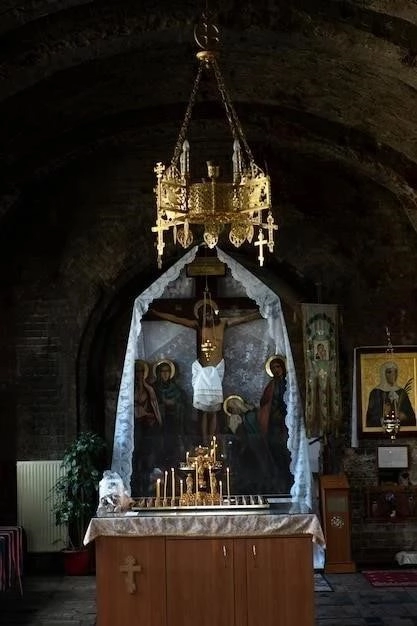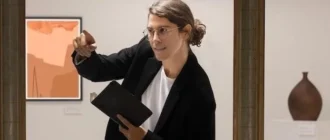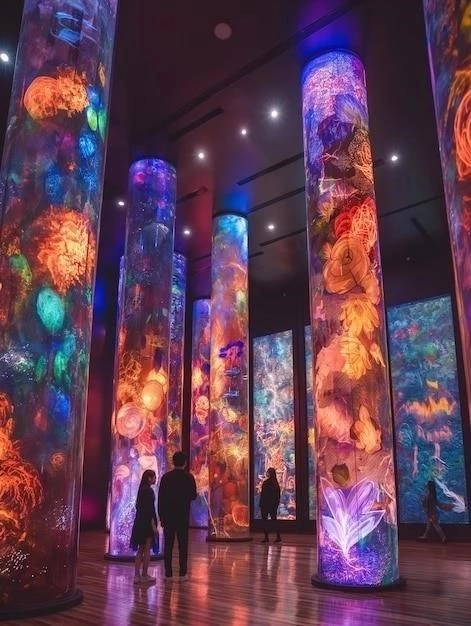Introduction: The Met’s Place in the World of Art
The Metropolitan Museum of Art, colloquially referred to as the Met, stands as a beacon of artistic and cultural heritage in the heart of New York City. As the largest art museum in the Americas and among the most comprehensive globally, the Met holds a position of immense prestige in the world of art. Its vast and diverse collection, spanning millennia and continents, offers an unparalleled journey through human creativity and expression.
A History of the Metropolitan Museum of Art
The Metropolitan Museum of Art’s storied history began not in a grand hall filled with masterpieces, but with a determined vision conceived far from American shores. In 1866, a group of Americans gathered in Paris, France, united by the aspiration to establish a national institution of art that would rival the great museums of Europe. Among them was lawyer John Jay, whose fervent advocacy for the project propelled it forward upon their return to the United States. This dedicated group envisioned a museum that would not merely house art, but would serve as an instrument of education and enlightenment, fostering a deeper appreciation for art and culture among the American people.
On April 12, 1870, the Metropolitan Museum of Art was formally incorporated, marking the genesis of what would become a cornerstone of New York City’s cultural landscape. The museum’s first home, a far cry from its current Central Park location, was a more modest brownstone on Fifth Avenue at 681 Fifth Avenue. There, on February 20, 1872, the Met opened its doors to the public for the first time, its inaugural collection a relatively small assemblage of European paintings and a collection of Cypriot antiquities. Despite its modest beginnings, the Met’s founders had sown the seeds for an institution destined for greatness.
From its inception, the Met embarked on a path of continuous growth and expansion, fueled by a combination of private donations, public funding, and an unwavering commitment to its founding mission. Over the decades that followed, the museum’s collection burgeoned, encompassing a staggering breadth of artistic production spanning centuries and continents. The Met’s iconic façade on Fifth Avenue, a testament to its architectural grandeur, was completed in 1902, marking the museum’s firm establishment as a fixture of New York City’s cultural identity. With each passing decade, the Met’s stature grew, attracting not only visitors from around the world but also solidifying its reputation as a world-renowned center for scholarship, conservation, and public engagement with art.

2.1 Founding and Early Years
The Metropolitan Museum of Art’s genesis can be traced back to a pivotal moment in 1866 in Paris, France. A group of Americans, including prominent figures like businessman and art enthusiast William T. Blodgett and lawyer John Jay, convened with a shared vision: to establish a national institution of art that would not only rival the great museums of Europe but also serve as a testament to America’s growing cultural aspirations. This vision was deeply rooted in the belief that art possessed a transformative power, capable of elevating the human spirit and fostering intellectual curiosity.
Upon their return to the United States, these dedicated individuals wasted no time in setting their ambitious plan into motion. On April 13, 1870, the Metropolitan Museum of Art was officially incorporated, marking a watershed moment in the American cultural landscape. The museum’s first home, a far cry from its current sprawling complex, was a comparatively modest brownstone located at 681 Fifth Avenue in New York City. This building, while lacking the grandeur of the Met’s later home, served as a crucial first step, a tangible symbol of the institution’s commitment to bringing art to the American people.
The Met first opened its doors to the public on February 20, 1872, its inaugural collection a reflection of both the prevailing artistic tastes of the time and the nascent museum’s limited resources. European paintings, primarily of the Old Masters, formed the core of the collection, alongside a collection of Cypriot antiquities acquired through the efforts of Luigi Palma di Cesnola, the museum’s first director. Despite its relatively small size and scope, the Met’s opening was met with enthusiasm, signaling a growing public appetite for art and cultural engagement. The museum’s founders had successfully planted the seeds for what would become a cornerstone of American cultural life, a beacon of artistic excellence destined to evolve and expand in the decades to come.
2.2 Expansion and Growth
From its modest beginnings in a Fifth Avenue brownstone, the Metropolitan Museum of Art embarked on a remarkable trajectory of expansion, driven by a confluence of philanthropic support, visionary leadership, and an unwavering commitment to its founding mission. The museum’s relocation to its current location in Central Park in 1880 marked a pivotal moment in its history, signaling its emergence as a major force in the art world. This move provided the Met with ample space to accommodate its rapidly growing collection and to realize its ambitions of creating a truly encyclopedic museum, encompassing art from across cultures and throughout history.
The late 19th and early 20th centuries witnessed an unprecedented period of growth for the Met, fueled in part by the extraordinary generosity of prominent philanthropists like J.P. Morgan, John D. Rockefeller Jr., and Robert Lehman. Their contributions, both financial and in the form of significant art collections, enabled the museum to acquire masterpieces from around the globe, transforming it into a treasure trove of artistic achievement. The museum’s iconic façade on Fifth Avenue, a masterpiece of Beaux-Arts architecture, was completed in 1902, serving as a symbol of the Met’s newfound prominence and its ambition to rival the grand museums of Europe.
The Met’s expansion continued unabated throughout the 20th century and into the 21st, driven by a combination of strategic acquisitions, ambitious building projects, and a commitment to engaging a wider audience. The addition of the American Wing in 1924, the Temple of Dendur in 1978, and the Met Breuer in 2016 are just a few examples of the museum’s ongoing efforts to broaden its scope and reach. Today, the Metropolitan Museum of Art stands as a testament to the transformative power of art and the enduring legacy of its founders, a dynamic institution that continues to inspire, educate, and captivate visitors from around the world.

The Heilbrunn Timeline of Art History: A Digital Journey
In an era defined by technological advancement, the Metropolitan Museum of Art has embraced digital innovation as a means of extending its reach and enriching the visitor experience. At the forefront of these initiatives stands the Heilbrunn Timeline of Art History, a groundbreaking online resource launched in 2000 that has since become an indispensable tool for art enthusiasts, students, and scholars worldwide. Named in honor of the Heilbrunn Foundation, a longstanding supporter of the Met’s educational mission, the Timeline embodies the museum’s commitment to fostering accessibility and scholarship in the digital age.
The Heilbrunn Timeline of Art History is not merely a digital catalogue of the Met’s vast collection; it is a dynamic and interactive exploration of art history on a global scale. Featuring over one thousand thematic essays penned by leading scholars in the field, the Timeline delves into diverse artistic movements, cultural contexts, and historical periods, offering a nuanced and comprehensive understanding of art’s evolution through time. Complementing these essays are high-resolution images of over 7,000 works of art from the Met’s collection, each meticulously contextualized within the broader narrative of art history.
What distinguishes the Heilbrunn Timeline of Art History is its user-friendly interface and its multifaceted approach to navigating the vast realm of art history. Users can explore the Timeline chronologically, thematically, or geographically, allowing for personalized journeys of discovery tailored to individual interests. The Timeline’s interactive features, including maps, timelines, and zoom capabilities, further enhance the user experience, encouraging active engagement and a deeper appreciation for the interconnectedness of art across time and cultures. The Heilbrunn Timeline of Art History stands as a testament to the Met’s unwavering commitment to harnessing the power of technology to make art and scholarship accessible to a global audience.
3.1 Structure and Organization
The Heilbrunn Timeline of Art History distinguishes itself through its intuitive structure and multifaceted organizational framework, designed to facilitate a comprehensive and nuanced exploration of art history. The Timeline’s architecture is built upon three interconnected pillars: chronology, geography, and theme, each offering a distinct lens through which to approach the vast and interconnected world of art. This tripartite structure empowers users to navigate the Timeline in a manner tailored to their individual interests, whether they seek a chronological overview of a particular artistic movement, a geographic exploration of artistic traditions across cultures, or a thematic deep dive into a specific subject matter.
Chronologically, the Timeline spans millennia, from the dawn of human creativity to the present day, presenting a sweeping panorama of art history divided into distinct periods. Each period is further subdivided into regional and thematic sections, allowing users to zoom in on specific timeframes and geographic locations. This chronological backbone provides a clear and concise framework for understanding the evolution of art, highlighting stylistic shifts, cultural influences, and the interplay of continuity and innovation across time.
Geographically, the Heilbrunn Timeline of Art History encompasses a truly global scope, encompassing artistic traditions from all corners of the world. Users can embark on virtual journeys across continents, exploring the unique artistic expressions of diverse cultures. The Timeline’s geographic organization underscores the interconnectedness of the art world, highlighting cross-cultural influences, stylistic exchanges, and the shared human impulse towards creative expression that transcends geographic boundaries. This global perspective fosters a more inclusive and nuanced understanding of art history, moving beyond a Eurocentric focus to embrace the richness and diversity of artistic production worldwide.
3.2 Content and Scope
The Heilbrunn Timeline of Art History distinguishes itself not only through its innovative structure but also through the richness and depth of its content. At the heart of the Timeline lies a vast repository of over one thousand scholarly essays, each meticulously researched and written by leading experts in their respective fields. These essays delve into a wide array of subjects, from specific artistic movements and periods to thematic explorations of iconography, patronage, and the social and cultural contexts that shaped artistic production throughout history. The essays are written in a clear and engaging style, making complex art historical concepts accessible to a broad audience without sacrificing scholarly rigor.
Complementing the Timeline’s impressive collection of essays are over 7,000 high-resolution images of works of art from the Metropolitan Museum of Art’s collection. These images are not mere illustrations but integral components of the Timeline’s content, each carefully selected and contextualized within the broader narrative of art history. Users can zoom in on these images to appreciate intricate details, explore different viewpoints, and gain a deeper understanding of the artist’s technique and vision. The juxtaposition of scholarly essays and high-quality images creates a uniquely immersive and enriching experience, allowing users to engage with art history on both an intellectual and a visual level.
The scope of the Heilbrunn Timeline of Art History is truly global, encompassing artistic traditions from across cultures and spanning millennia. The Timeline’s content is continually expanding and evolving, reflecting the dynamism of art history as a field of study and the Met’s own commitment to broadening its collection and scholarship. New essays and images are regularly added, ensuring that the Timeline remains a vital and up-to-date resource for anyone seeking to deepen their understanding and appreciation of art history.
Highlighting Key Collections
The Metropolitan Museum of Art stands as a testament to the vast panorama of human artistic achievement, its collection encompassing a staggering breadth of cultures, time periods, and artistic mediums. To navigate this expansive repository is to embark on a journey through the history of art itself, encountering masterpieces that embody the creative spirit of diverse civilizations across millennia. While every corner of the Met offers treasures to behold, certain collections stand out for their exceptional quality, historical significance, and ability to transport viewers across time and continents.
Among the Met’s most celebrated holdings is its collection of European paintings, a veritable who’s who of artistic giants from the Renaissance to the early 20th century. Masterpieces by Italian Renaissance masters like Leonardo da Vinci, Michelangelo, and Raphael grace the galleries, their canvases imbued with a timeless beauty and technical brilliance that continues to captivate viewers centuries later. Works by Dutch masters such as Rembrandt van Rijn and Johannes Vermeer offer glimpses into the intimate world of 17th-century Dutch life, while the vibrant canvases of Impressionist and Post-Impressionist masters like Claude Monet, Edgar Degas, and Vincent van Gogh capture the fleeting beauty of light and atmosphere, revolutionizing the way we see the world.
Venturing beyond the realm of European art, the Met’s collection of Egyptian art transports viewers to the banks of the Nile, immersing them in the splendor and mystery of one of the world’s oldest civilizations. The Temple of Dendur, a monumental sandstone temple gifted to the United States by Egypt, stands as a testament to the architectural prowess of the ancient Egyptians, while the museum’s vast holdings of sculpture, sarcophagi, jewelry, and funerary objects offer intimate glimpses into the beliefs, rituals, and daily life of this ancient culture.

4.1 Egyptian Art
The Metropolitan Museum of Art’s collection of Egyptian art stands as one of the most comprehensive and renowned outside of Egypt, offering a captivating journey through the art, beliefs, and daily life of this ancient civilization spanning millennia. From monumental architecture to delicate papyrus fragments, the collection illuminates the extraordinary achievements of Egyptian artists and craftspeople, who, over centuries, developed distinctive artistic conventions while expressing enduring human concerns about life, death, and the afterlife.
At the heart of the collection lies the Temple of Dendur, a monumental sandstone temple dating back to the reign of the Roman Emperor Augustus in the 1st century BCE. Originally situated in Nubia, the temple was gifted to the United States in 1965 as a gesture of gratitude for American assistance in preserving Nubian monuments during the construction of the Aswan High Dam. Reconstructed within a dedicated wing of the Met, the Temple of Dendur stands as a testament to the architectural prowess of the ancient Egyptians and a poignant reminder of the enduring power of cultural exchange.
Beyond the Temple of Dendur, the Met’s Egyptian collection encompasses a breathtaking array of objects that illuminate various facets of ancient Egyptian civilization. Statues of pharaohs and deities, often carved from diorite, granite, or schist, exude an aura of power and majesty, reflecting the Egyptians’ belief in the divine right of kings and the importance of maintaining cosmic order. Intricately painted sarcophagi, adorned with hieroglyphics and scenes from the afterlife, offer glimpses into the Egyptians’ elaborate funerary rituals and their belief in the soul’s journey after death. Exquisitely crafted jewelry, amulets, and funerary objects, often crafted from gold, silver, and precious stones, attest to the Egyptians’ refined craftsmanship and their belief in the protective power of these objects in both life and the afterlife.

4.2 European Paintings
The Metropolitan Museum of Art’s collection of European paintings ranks among the most comprehensive and celebrated in the world, offering a sweeping survey of artistic production from the early Renaissance to the dawn of modernism. Within the museum’s grand galleries, visitors encounter masterpieces that embody the evolution of European art, from the spiritual aspirations of the Italian Renaissance to the revolutionary brushstrokes of the Impressionists. Each canvas tells a story, not only of artistic innovation but also of the cultural, social, and political forces that shaped the course of European history.
The Italian Renaissance, a period of unparalleled artistic flourishing, is represented in the Met’s collection through a constellation of iconic works. Leonardo da Vinci’s enigmatic masterpiece, the unfinished Portrait of a Musician, captivates with its subtle modeling and psychological depth, while Michelangelo’s hauntingly beautiful drawing, Studies for the Libyan Sibyl, offers a glimpse into the artist’s creative process as he grappled with the challenges of representing the human form. Raphael’s graceful Madonnas, imbued with a serene beauty and tender emotion, epitomize the Renaissance ideal of humanism, while Titian’s sensuous portraits and dramatic mythological scenes showcase the Venetian master’s mastery of color and composition.
From the sun-drenched landscapes of Italy, the Met’s collection transports visitors north to the Netherlands, where a different artistic sensibility emerged during the 17th century. Johannes Vermeer’s meticulously rendered interiors, bathed in soft, luminous light, offer intimate glimpses into the lives of middle-class Dutch women, while Rembrandt van Rijn’s evocative portraits and biblical scenes captivate with their psychological depth and masterful use of chiaroscuro, a technique of contrasting light and shadow. Frans Hals’s lively group portraits, characterized by their spontaneity and immediacy, capture the energy and vitality of Dutch society during this period.










